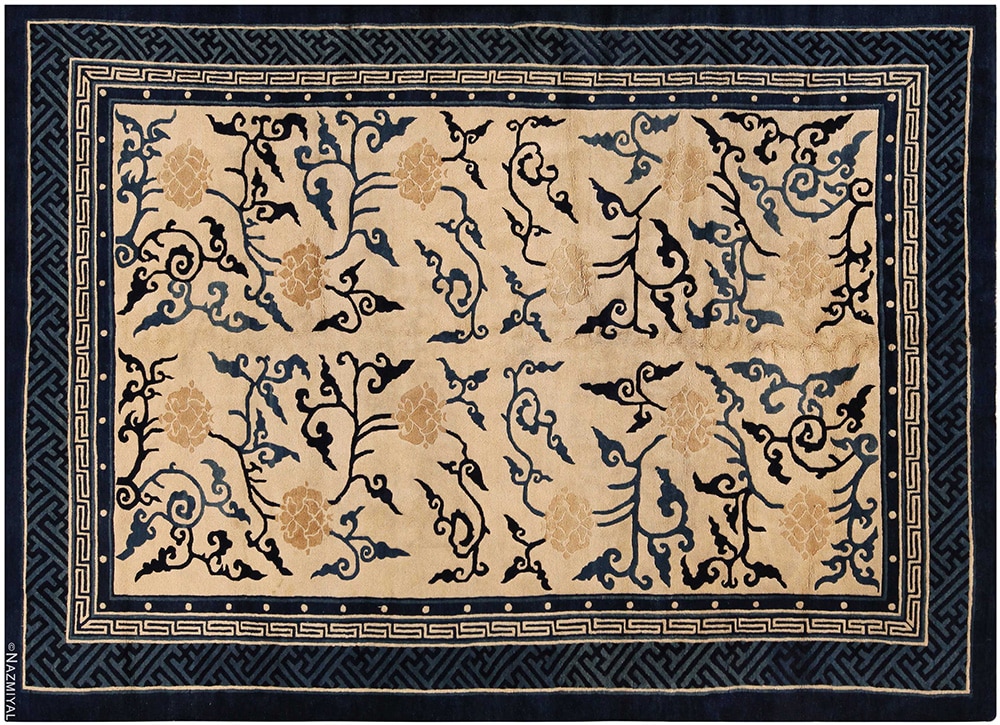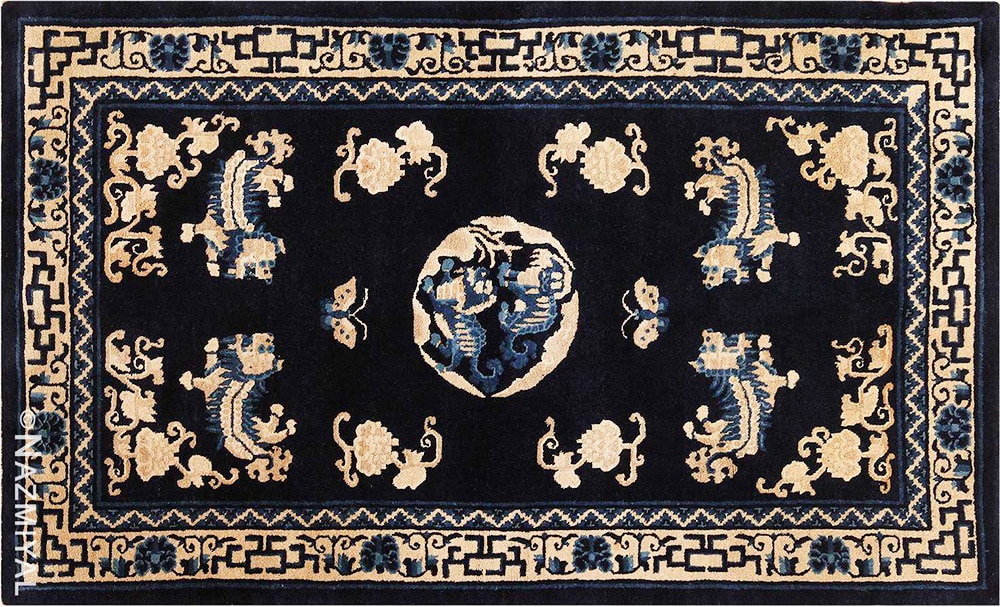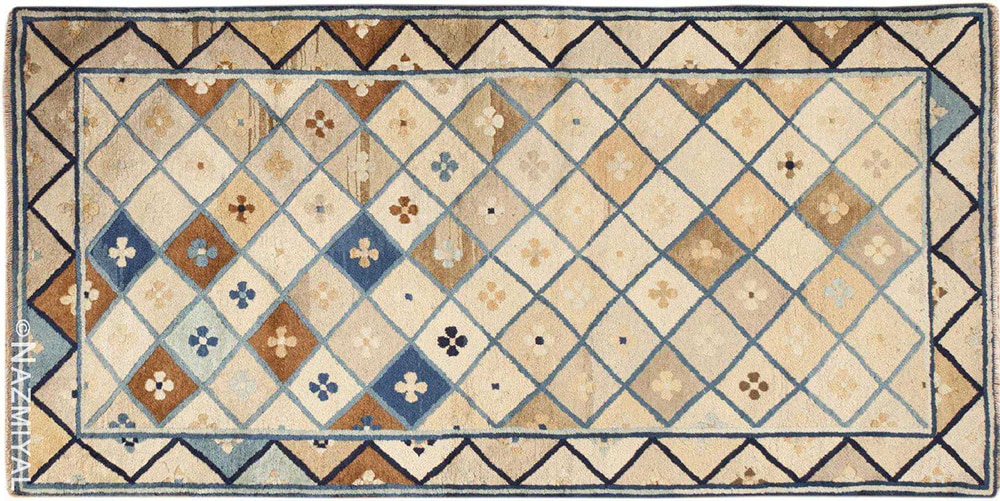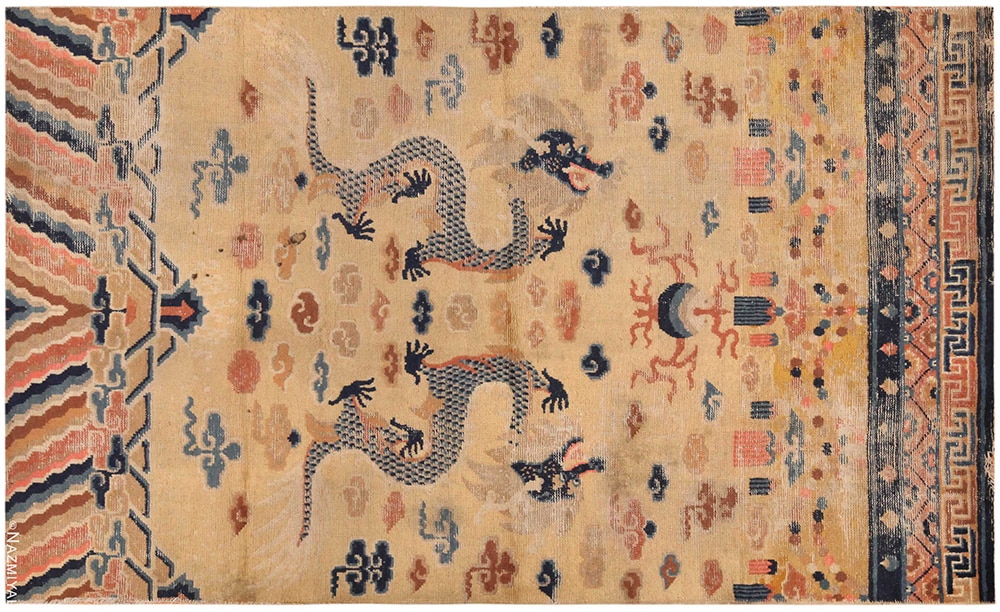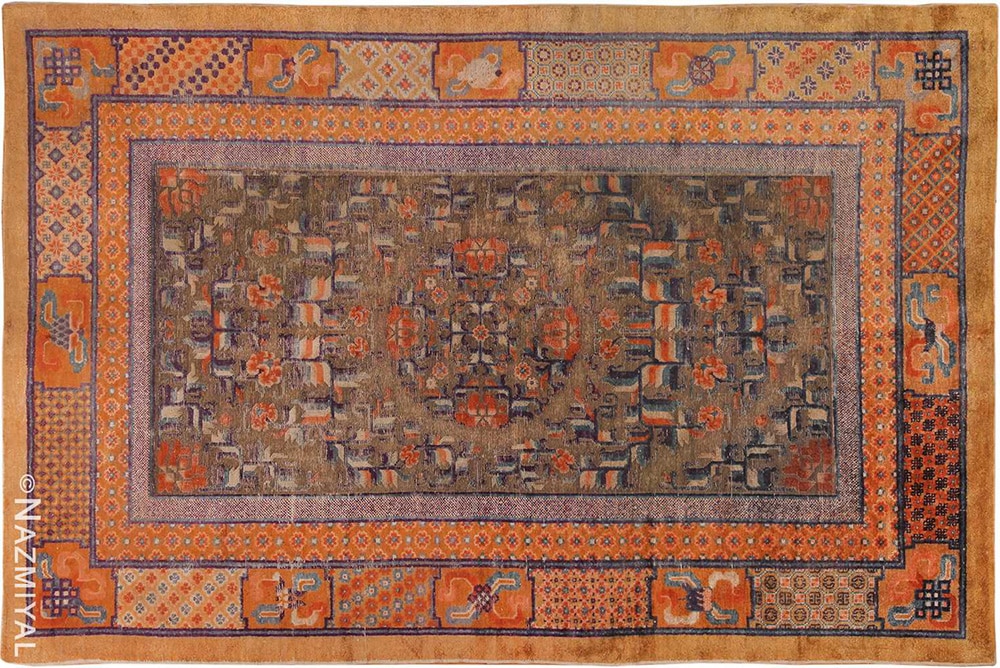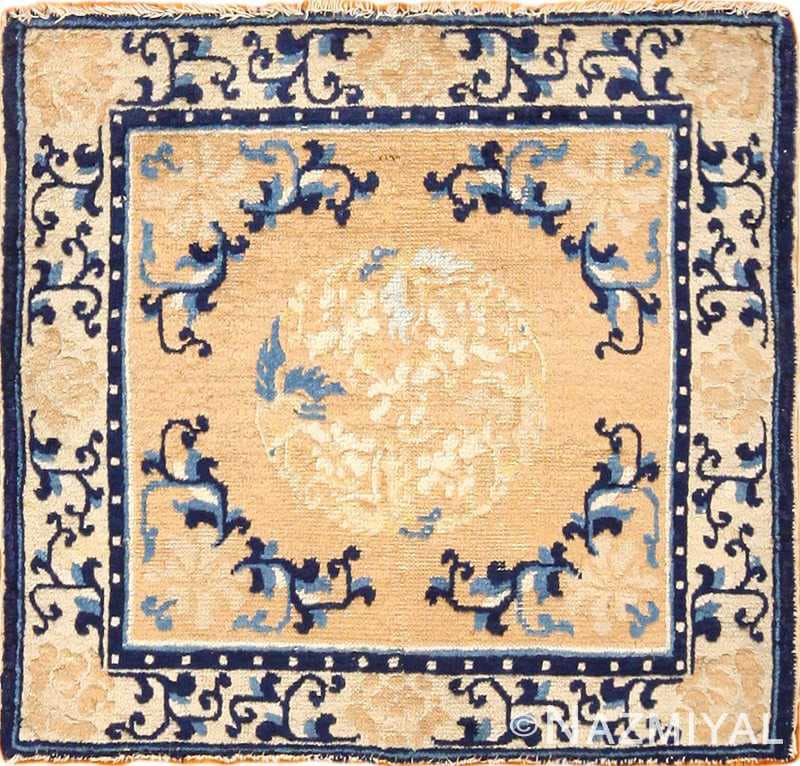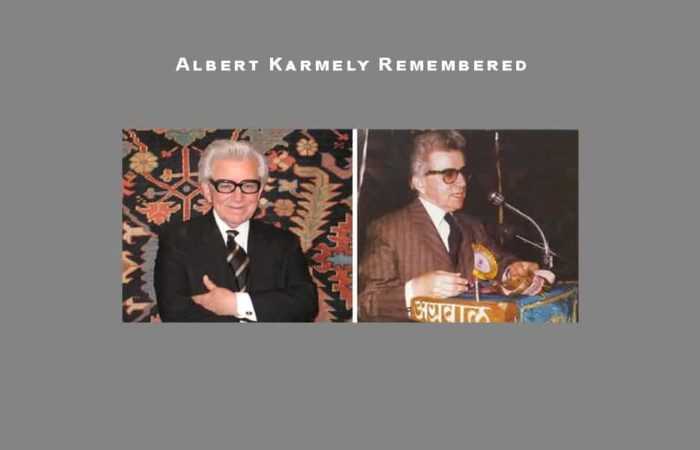Discovering the Beauty and Symbolism of Antique and Vintage Chinese Carpets
Brief History
The production of carpets in China dates back to at least the first century A.D., as evinced by the writing of historian Pan Ku (A.D. 32 – 92), and the first painted references to Chinese carpets appear as early as the Tang Dynasty (618 – 907). Such early carpets were characterized by a muted pallet of browns, greys and blues, and featured elegant floral and cloud motifs similar to those we still see today. By the Qing Dynasty (A. D. 1636-1912), we have more lavish descriptions of carpet production, such as the report by the Jesuit Missionary Father du Halde, “Besides the silks which are wrought here, as elsewhere, they make fine carpets. Such as Turkey ones, of all sizes.” (A. D. 1741).
Designs and Motifs
Chinese carpets carry some of the most symbolically laden and elegantly rendered motifs of carpets worldwide. Flora such as what have come to be referred to as the “Four Gentlemen,” or “Four Noble Ones,” (plum blossom, orchid, bamboo and chrysanthemum) are common, as are flowers arranged in vases, suggesting harmonious union of nature and the domestic sphere. Animals are also frequently represented with remarkable charm and panache. Some of the most common beasts include the dragon, symbolizing luck and the male element Yang, and the phoenix, symbolizing the female element of Yin as well as peace and prosperity. Bats represent good luck and happiness, and Chinese guardian lions, sometimes known as Fu Dogs in the West are especially well represented in the Nazmiyal collection.

A gorgeous example of an 18 th c. rug from Ningxia, featuring auspicious flowers and abstracted dragons in at the corners. Nazmiyal collection, Rug 70812
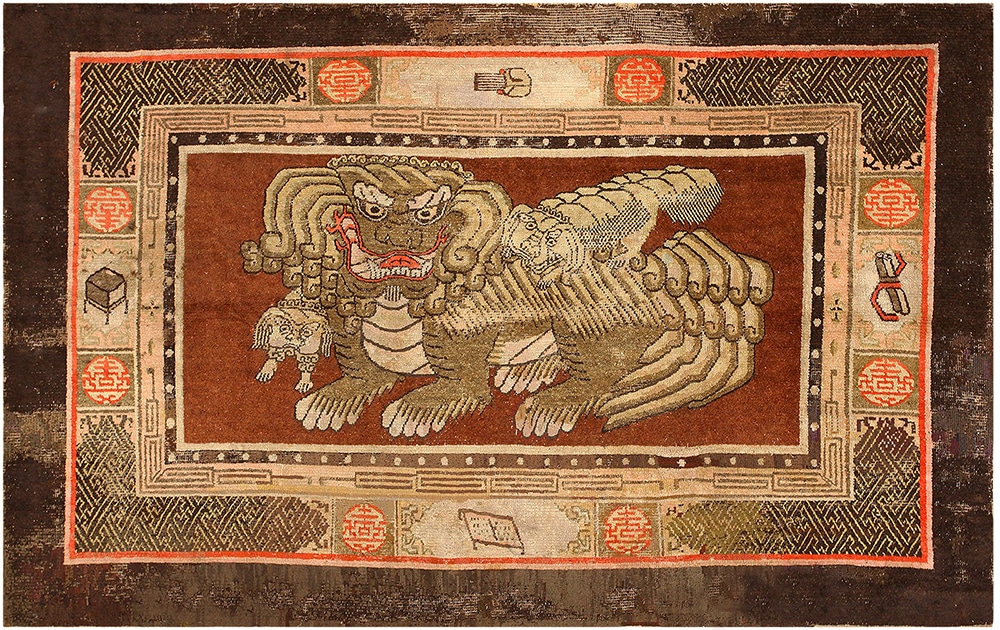
An extremely rare 17th C. rug featuring a female Foo dog accompanied by her pups. Nazmiyal collection, Rug 48031
Colors and dyes
Chinese rugs are distinctive for their restrained and sophisticated pallet, often tending towards a soothing blue or cheerful yellow rather than the intensity of the warmer shades common in Persian and Turkish carpets. Indigo is the source of the characteristic blue color common to so many classic Chinese rugs. Two other common sources for warmer shades, such as deep purple or bright red are the bark of the brazilwood and logwood trees, however, these dyes sometimes fade with time adding to the restrained elegance of such antique pieces. Scholars have also suggested that iron in the brown dyes contribute to the accelerated erosion of darker areas in some early carpets, giving these pieces incredible textural variation and interest.

This luscious 18th C. rug from the province of Kansu near Ningxia may well have been colored using the bark of the brazilwood and logwood trees. Nazmiyal Collection, Rug 70865
Weaving Centers
Scholars believe that most early rugs were woven in the province of Ningxia, an area known for its fine wool production, and currently located between Inner Mongolia and Gansu Province. Such carpets are characterized by a relatively soft, fluffy feel and a dominant use of yellow. Around 1900, the major center for carpet production shifted largely to the capital Beijing, and later, the port town of Tianjin. Scholars are not conclusive as to what explains this shift, but it was likely influenced by the desire for foreign trade following the limited availability of carpets from the Near East due to the disruption of trade during World War I. Other theories include the desire to more directly supply carpets to the Imperial court, or the charitable impulse of a Buddhist lama to create employment for the destitute in the region around Beijing. Compared with the production in Ningxia, these Beijing carpets more prominently feature the so called “Beijing blue” so popular for export to the West, and larger dimensions to suite Western homes. Such carpets are also less fleesy to the touch, and frequently feature a finer weave than their Ningxia counterparts. Later Tianjin carpet design increasingly shifted towards more minimal design elements such as flowers set against an open field, reduced boarders, and an expanded color palette. Some designs were even supplied by American companies which largely came to dominate the 20th C. production in Tianjin. It is likely that some of the gorgeous Chinese art deco rugs in the Nazmiyal collection were created in Tianjin through this remarkable confluence of Eastern and Western aesthetics.
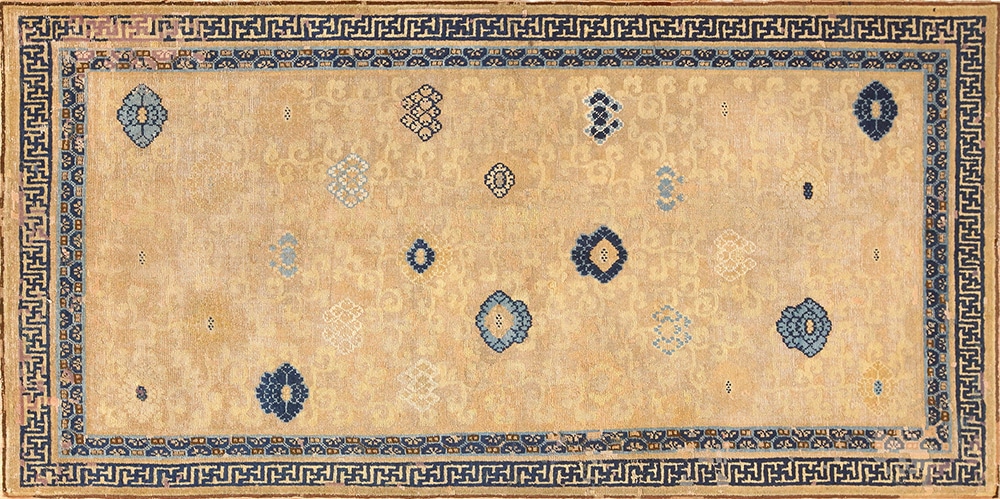
This remarkably elegant 17th C. rug shows the muted yellow background classic in Ningxia production. Nazmiyal Collection, Rug 3285
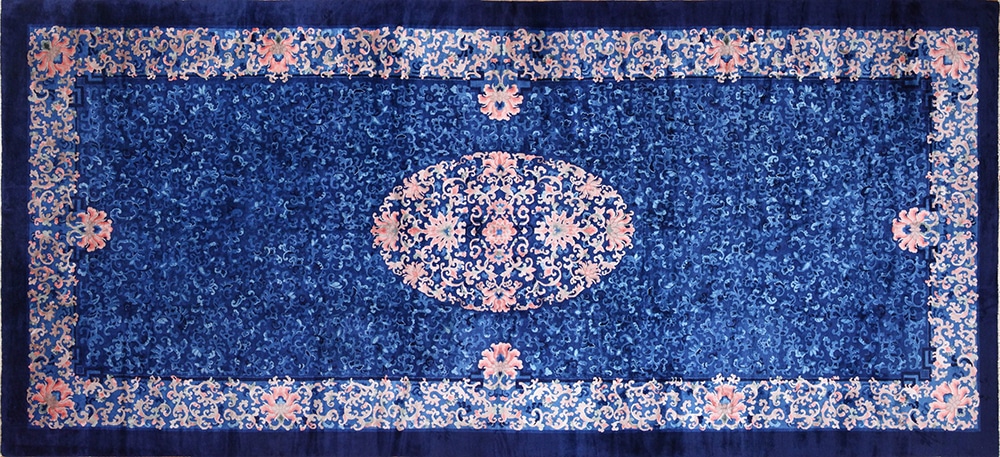
This stunning rug exemplifies the classic “Beijing blue” associated with carpet production around the capital in the early 20th C. Nazmiyal Collection, Rug 49240


